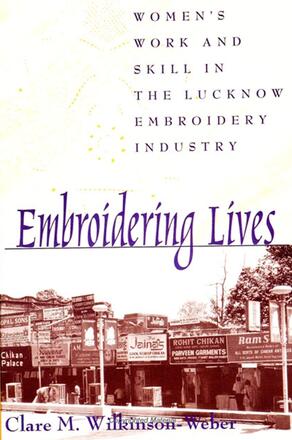
Embroidering Lives
Women's Work and Skill in the Lucknow Embroidery Industry
Alternative formats available from:
Fusing aesthetic and economic perspectives in exploring the lives and work of women in the Lucknow, India embroidery industry, this book offers insights into anthropology of work and women’s studies.
Description
Fusing aesthetic and economic analyses, Embroidering Lives investigates the lives and work of women in the chikan embroidery industry of Lucknow, India. Richly descriptive and accessibly written, the book explores many important issues in women's studies, anthropology, and urban development today—the impact of purdah (seclusion of women) upon women's work and occupational opportunities, the key role of sub-contractors in home-based industry, the need to understand a handicraft from its makers' point of view, and the role of development agencies and programs.
Clare M. Wilkinson-Weber is Adjunct Professor of Anthropology at Washington State University.
Reviews
"This is a sound anthropological study exploring a well-regarded industry from a new vantage point: the women involved in embroidering, teaching embroidery, and arranging for work for the embroiderers. The book provides detailed information on the art/skill itself, and rich descriptions of all stages of the process (including laundering the cloth, stamping the cloth, etc. ) Great innovative methodology is used and this enables deeper, comprehensive understanding of a range of issues. The author relates themes she discovered to larger issues of gender and work. " — Anita M. Weiss, University of Oregon
"From the standpoint of a general reader, the chapters on gender make a major contribution to our understanding of several gender issues. The author explores the relationship between female seclusion and the practice of embroidery, examines how 'craft' activity is integrated into the larger social life of women, and analyzes the internal differentiation of women within the industry. The book is an important addition to feminist literature on work, but is more sophisticated and nuanced than comparable scholarship on South Asia. Its discussion of the ways that female agents are themselves involved in the 'exploitation' of, and control over, female labor is novel and important. Wilkinson-Weber's argument against the standard position heard in the Lucknow area that embroidery is a 'part-time' activity done by women in their 'free time' is a compelling one that has significant implications for the study of women's work in India and elsewhere in the world. " — Douglas E. Haynes, Dartmouth College